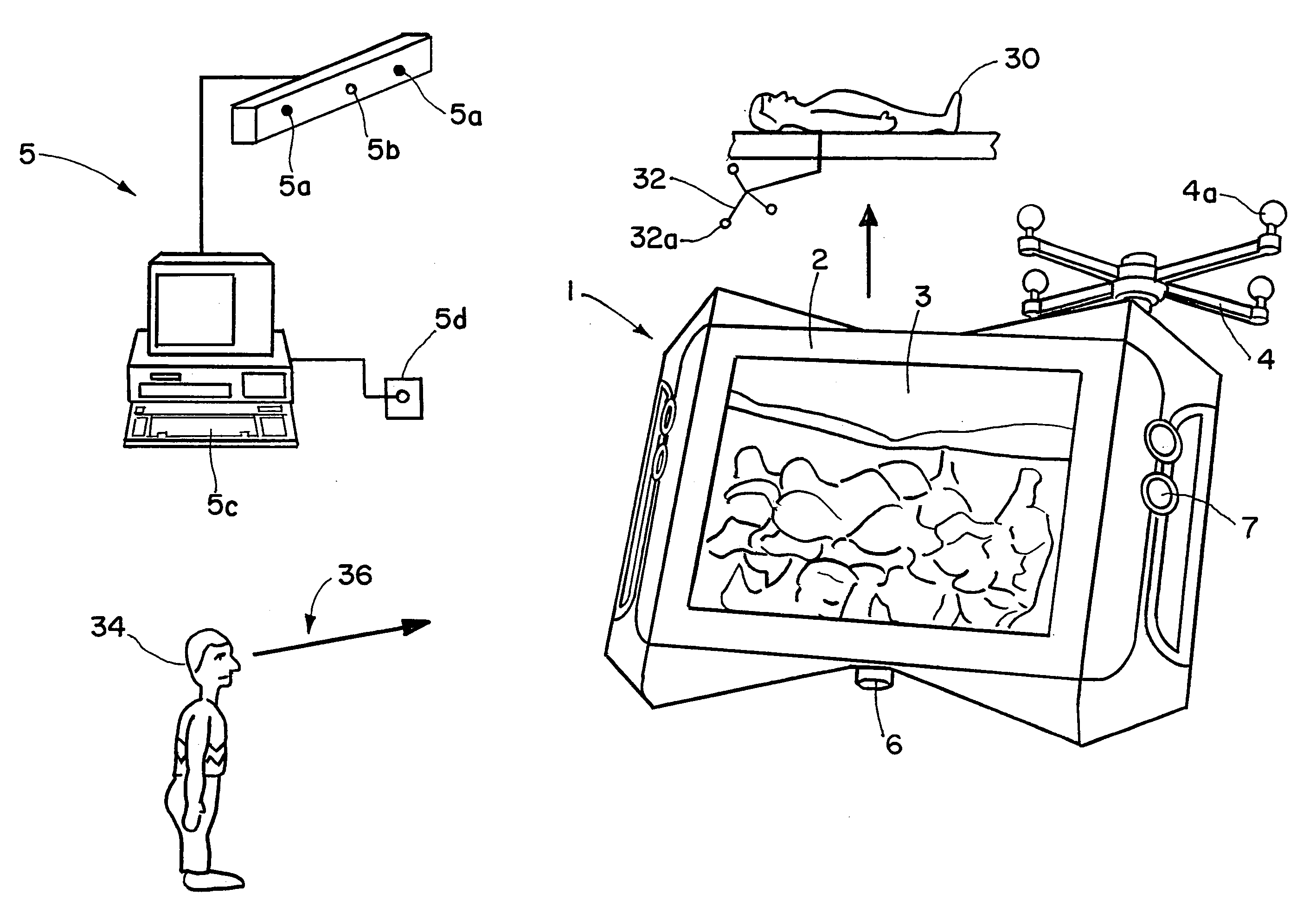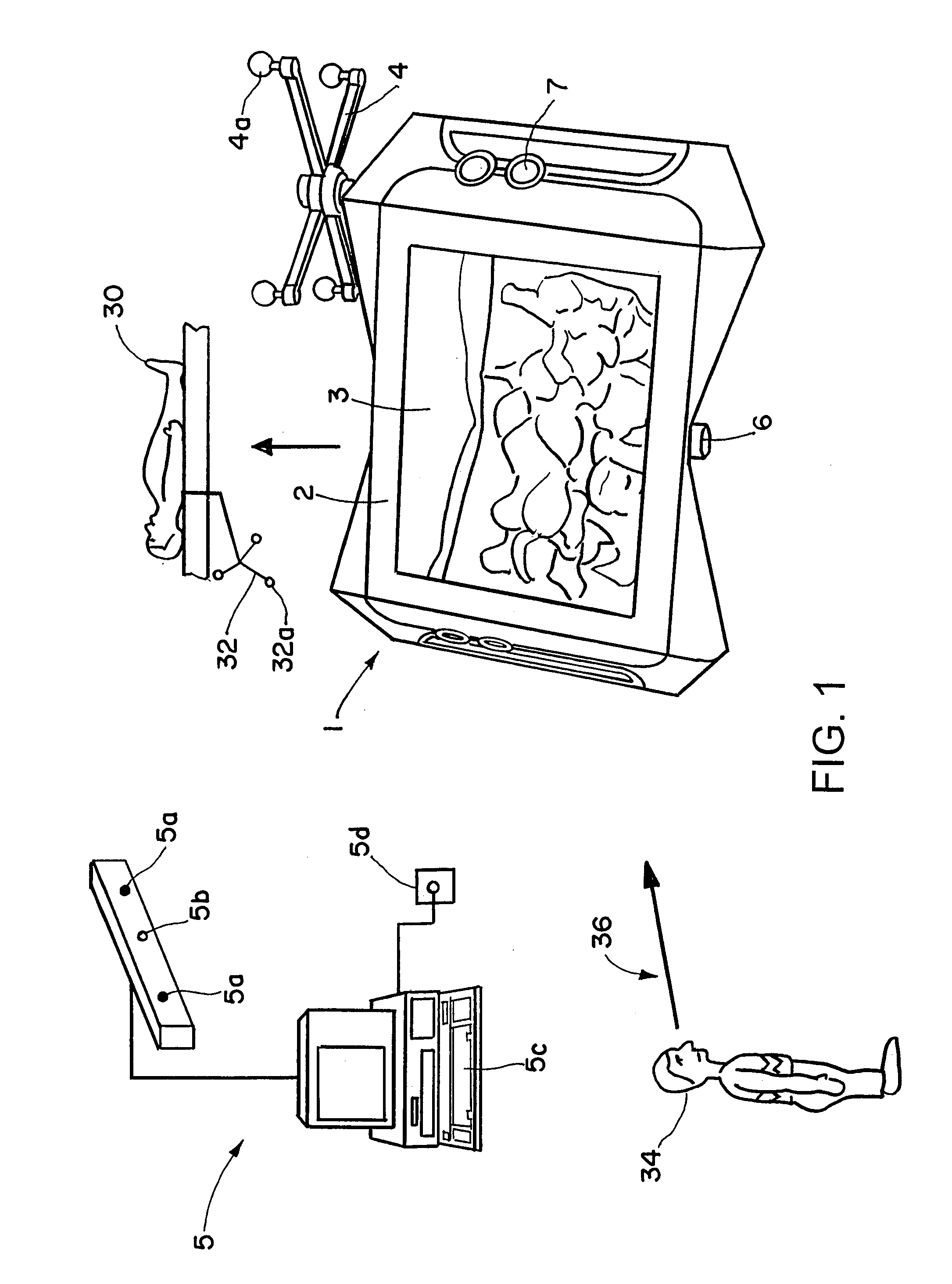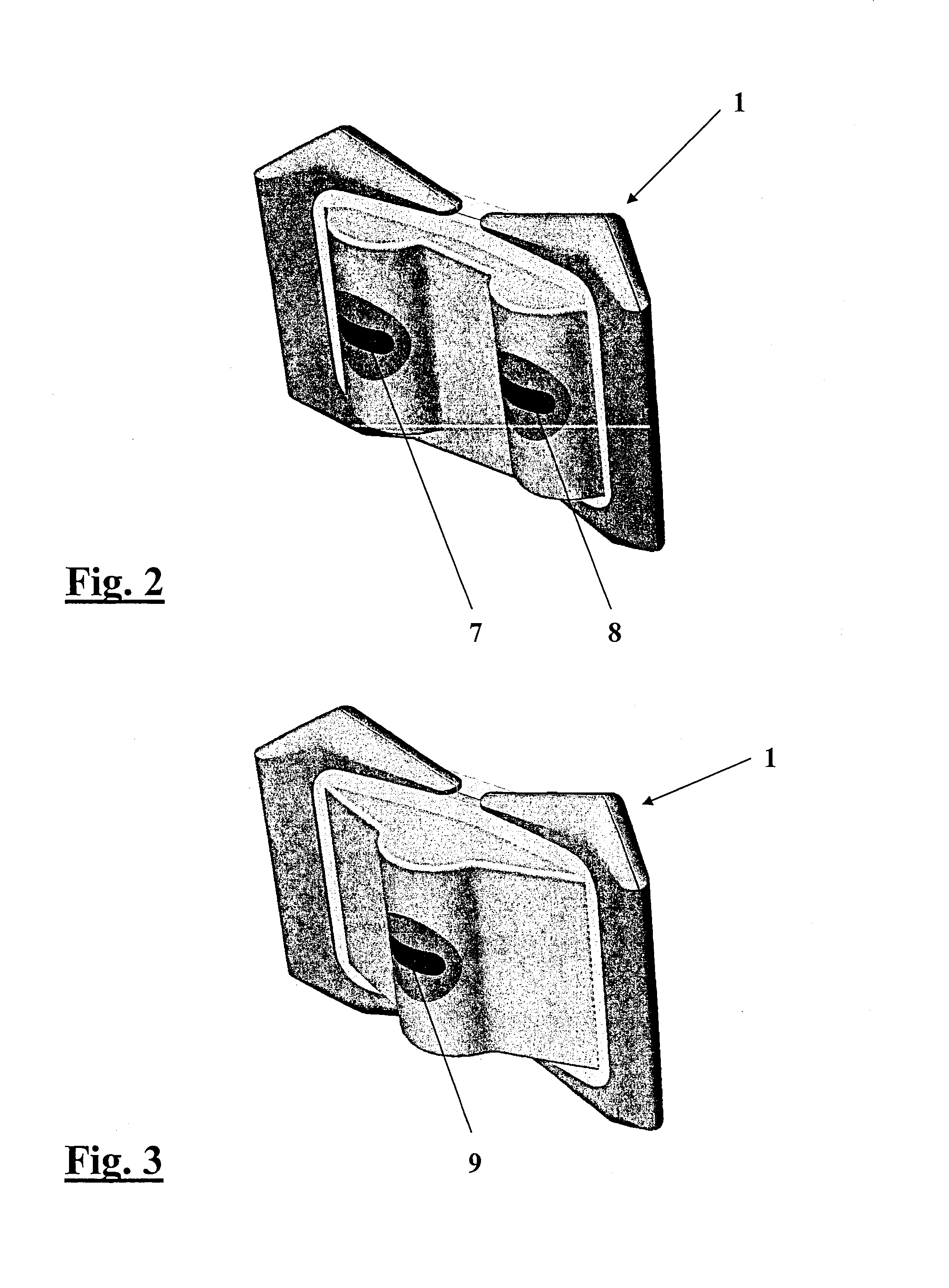Stereoscopic visualization device for patient image data and video images
a visualization device and image data technology, applied in the field of medical video imaging, can solve the problems of difficult estimation or inferential depth information of the unit, only providing the doctor and/or any observer with a flat projection, and achieving the effects of improving flexibility, simplifying and quickly calculating image rendering, and improving resolution
- Summary
- Abstract
- Description
- Claims
- Application Information
AI Technical Summary
Benefits of technology
Problems solved by technology
Method used
Image
Examples
Embodiment Construction
[0021]Referring to FIG. 1, an image display unit 1 is shown in a perspective view from the front. The image display unit includes a casing 2, which is fitted on a front side with a screen 3. The screen 3 is an auto-stereoscopic screen or monitor, and in the present case a partially covered patient's back is shown on its display with the spinal column beneath.
[0022]A reference star 4 with markers 4a is shown on top of the casing 2 and enables a position of the image display unit 1 in a localizing space of a navigation system 5 to be established. Thus, a position of the cameras 7 and 8 (shown in FIG. 2 on the rear side of the image display unit 1) also can be established in the navigation system's localizing space. More particularly, since the patient 30 is also tracked by the navigation system 5 via reference star 32 with markers 32a, the video image of the cameras 7 and 8 also can be spatially assigned in the navigation system 5 and displayed in the correct spatial positional relati...
PUM
 Login to View More
Login to View More Abstract
Description
Claims
Application Information
 Login to View More
Login to View More - R&D
- Intellectual Property
- Life Sciences
- Materials
- Tech Scout
- Unparalleled Data Quality
- Higher Quality Content
- 60% Fewer Hallucinations
Browse by: Latest US Patents, China's latest patents, Technical Efficacy Thesaurus, Application Domain, Technology Topic, Popular Technical Reports.
© 2025 PatSnap. All rights reserved.Legal|Privacy policy|Modern Slavery Act Transparency Statement|Sitemap|About US| Contact US: help@patsnap.com



